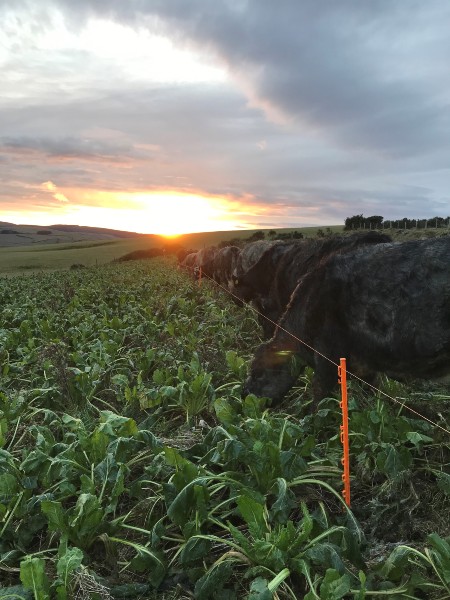Forage Utilisation and Back-up Options
15 July 2021For those new to forage crops this year or those looking to improve utilisation, it is worth considering means to uphold good animal welfare and performance whilst maximising utilisation of these crops.
- Plan to strip graze to provide fresh material daily – all animals should be able to access the forage at the same time to minimise trampling and wastage.
- Weigh crop, calculate how long it will last and how far the fence can be moved to meet their needs, methods described in this FAS Technical note: Forage crops for livestock.
- Maintain a dry lie area or grass runback. Have back-up options if the weather turns: e.g. straw on the ground, moving to better drained/more sheltered fields or scope to increase the grass run back.
- Place silage or hay bales to supplement the forage before the winter to avoid trafficking on wet fields. Silage or hay should be analysed.
- Consider lower risk water supply options for cold weather, e.g. buried pipes, bigger troughs, shorter pipes or even heated water troughs.
- Only feed to ewes from 50 days after tup introduction to avoid impacting embryo implantation.
- Transition over 5-7 days for sheep or 10-15 days for cattle by introducing animals with full stomachs initially for a couple of hours a day.
- Observe behaviour, performance and/or condition and move any that are not doing well into an alternative feeding group on silage, grazing or indoor space for example.
- Keep an eye on bulb crop leaf – if lost to frost additional protein might be required – the silage/hay will help depending on the quality.
- Additional minerals are often required.
Poppy Frater, poppy.frater@sac.co.uk
Sign up to the FAS newsletter
Receive updates on news, events and publications from Scotland’s Farm Advisory Service

